Pedestrian 32: Walking in Los Angeles
Orange Peels, Trains and Buses, Concrete, Falling in Love.
Last month I finished Lotusland, a seven day series of walks around the City of Los Angeles. You can view the entire walk map here.
The series was a first. I’ve never planned consecutive walks all taking place in the same city. Usually I walk from one place to another, sleeping in a different bed each night. Instead, I stayed in one location. Each morning, I left the house, took off in one direction, and saw a different part of the city.
In the evening, when I was done walking, I relied on public transportation – a combination of light rail, subway, and bus – to bring me back home. I didn’t take a car the entire time.
Prior to this series, I’d visited Los Angeles maybe four or five times, all experiences spent in a car being shuttled from one private space to another, with little understanding of what goes on in between.
I know Los Angles much better now, although I feel I walked a completely different city. One I’d never visited before.
I’m Alex Wolfe and this is Pedestrian, a newsletter on the observations, feelings, people and experience of walking through the built environment.
I almost forgot how much I was dreading this walk. Nothing to do with Los Angeles, really. The dread was actually rooted in uncertainty. The uncertainty of not knowing what could happen over seven days or if walking Los Angeles would even be a valuable experience.
These same thoughts and feelings cloud my mind before any long, multi-day walk. Everytime I question my own sanity and sense of judgment, knowing I’m about to enter some kind of self-imposed gauntlet.
Apprehension signals the walk is worthy of my effort, setting me up for a transformative experience. One that often begins in fear or confusion and ends in an indescribable, but familiar bliss. I feel closer to the world and my own humanity. An overarching sense of gratitude. A new lease on life.
On day one, I quietly forgot all my concerns after I took a few steps. All the worries I projected from the comforts of my couch some 2,800 miles away in Brooklyn dissipated. A certain rhythm emerged. A familiarity in a foreign place. Los Angeles was well worth the turmoil.
I walked 112.86 miles over a week, averaging about 16.12 miles per day. Lost in thoughts and looking closely at the city with my camera to my eye. No podcasts, audiobooks, or music. I spoke to countless Angelenos and walked for 6–10 hours a day. Each night, I was exhausted. My days were beyond full and I spent the evenings writing newsletters to recap my day. I wrote ~12,000 words.
I covered serious ground, but Los Angeles is a massive, sprawling city. One that requires far more than a week of walking to reach its far edges. Anyways, miles and step counts are irrelevant here. The series was not about seeing as much city as possible (in that case I would have rented a car), but to move through the city at a pace typically not asked of its residents. To walk a city that is often deemed un-walkable. To grind against that tension.
The practice is isolating at times. Not in the sense of loneliness, but how paying attention and moving slowly – the airplanes overhead, the sun moving across the pavement, the shifting demographics of a neighborhood, the plants growing between the cracks, the unanswered love letters beneath the overpass, and a million other details – brought me both closer to the world and further from society. A paradox. Daily life and its tasks requires us to move at an unnatural speed, one that feels entirely foreign after days of walking.
Of course Los Angeles can be walked. I’d argue most American cities can be walked, depending on the level of discomfort you can reasonably manage. The built environment of Los Angeles isn’t necessarily conducive to robust pedestrian activity, but that doesn’t mean the city isn’t enjoyable on two feet. I had a harder time getting around Orlando, Florida or even parts of Long Island.
I didn’t have to walk highways or balance on the tightrope of a narrow shoulder, as many assumed. The reality on the ground wasn’t unlike most car-dependent American cities: long walkable stretches of arterial roads congested with traffic, sleepy residential streets, strip malls, parking lots, and empty sidewalks.
Such a comparison is a disservice though. Los Angeles is something else – a lesson in contradiction. To walk the city is to intimately engage with its polarities. The city is immeasurable, distorted with Hollywood cliches, and best described as a loose network of suburbs – lacking a true center – nestled beneath the umbrella of imaginary city limits. Walking is a thread that links disparate pieces of a sprawling metropolis, one that is constantly changing and developing.
Los Angeles is – at times – ugly, with pockets of extreme beauty. Unexpected beauty. The intoxicating smells of colorful flowers mask car exhaust and urine. Palm trees line the streets and shoot from the ground with their fronds exploding in the sky like fireworks. Franciscan Monks introduced them to the ecosystem in the 1700’s, perhaps an unforeseen gesture to soften the blow of an environment that would be oppressively developed and covered in concrete and stucco over the course of 300 years.
I saw California bungalows furnished with fake concrete animals, trimmed hedges, and fruit bearing trees. Orange peels followed me throughout the entire journey. Wing-ding apartment buildings and even Victorian homes (such as those in Angeleno Heights) were scattered about, often adjacent to a busy ten lane highway supporting a midday traffic jam.
But on that same day, I could just as easily forgo the smog and traffic for nature, as I did while hiking Cahuenga Peak in beautiful Griffith Park, the fruits of my labor revealing an epic vista of the Los Angeles Basin. I walked the chaos of Hollywood Boulevard during the Oscars, navigated the lush, surveilled lawns of Beverly Hills, and ended some miles later at the Santa Monica Pier staring into the vastness of the Pacific Ocean. While walking Sunset Boulevard days before, I snuck away to the peaceful hills of Echo Park and walked the historic staircases tucked between single family homes.
Los Angeles is a friendly town, at least in my own experience. Those I encountered on the sidewalks were quick to smile and say hello, a gesture which caught me off guard.
Los Angeles doesn’t support pedestrian activity akin to older, more densely populated cities lining the east coast, but street life still manages to flourish. The sidewalks are far from empty in certain areas. Koreatown, MacArthur Park, and Chinatown – some of the most densely populated neighborhoods in the entire city – support a consistent buzz of foot traffic
Walking South Los Angeles was another story. More industrial than neighborhoods north of the 10, I spent stretches walking the sidewalk without seeing another person, save for groups of people huddled beneath bus stops, children getting out of school, or hungry workers ordering food at a taco truck. Traffic was the only constant, although those behind the wheel may as well have been invisible.
Maybe I got lucky, but Los Angeles public transit was an overall pleasant experience. I purchased a week pass for only $12.50, granting me unlimited rides on all trains and buses.
Transit was, at times, infrequent, but reliable and easy to navigate. I had no issues once I got my bearings (my biggest mistake, catching the purple line downtown when I meant to get the red to Hollywood – twice). Most of my commutes took no more than an hour.
Trains and buses were full of passengers during rush hour, but Los Angeles remains a car first city. Public transit is far from the glory days of Pacific Electric. Ridership continues to decline, but the city still has plans to expand the rail system – just over twenty-five years old – extensively.
I especially enjoyed riding the buses, a feeling I haven’t felt since my day’s living in Chicago. Los Angeles’ bus network is exceptional and actually a viable means of transportation. With a little patience, I could see living in the city without a car. You just need to know the system well, plan your commutes, and tolerate walking on broad streets with little shade.
I assumed the weather would be nothing but blue skies and sunshine, despite a historically wet winter season, and left my rain jacket in Brooklyn – a rookie mistake. I spent half of the series walking in some level of precipitation. People in Los Angeles make a big deal about the rain. Initially, I brushed their concern and laughed. On day three I caved and purchased an umbrella – an object I hesitate to carry on walks. The rain never seemed to end and I got tired of constantly wiping the rain off my camera lens.
Few stores carried umbrellas (maybe I just had bad luck) and I spent an hour searching for one until I stumbled upon a small, poorly stocked rack in a CVS. I paid far more than what the umbrella was worth, but it saved the walk. I’m a fan of walking with umbrellas now.
Two of those wet days would have kept me inside had I been walking in New York City, but the show had to go on. The strict parameters of a walking series serve as a forcing function, pushing me to contend with whatever weather conditions.
I could have been as easily upset as the college student I met from Tennessee, who traveled to Los Angeles to spend his spring break beneath the sun, expressing his displeasure any chance he could. Initially I too was disappointed with the wet conditions, but soon realized I was having an unusual Los Angeles experience. As I always say, what happens on the walk was meant to happen on the walk. The landscape was unusually lush and green, snow covered the mountains looming behind the skyline, and the Los Angeles River – best described as the city gutter – actually looked something like a river.
Walking Los Angeles, regardless of weather, is an unusual experience.
Every six months some major publication releases an article celebrating their most recent discovery: the innumerable benefits of walking. Most authors choose to paint an overly picturesque, romanticized version of what it means to walk. Few acknowledge how walking forces one to contend with ugly thoughts, inherent bias, tired stereotypes, and the harsh realities of living in America – especially in a dense urban metropolis.
Walking Los Angeles is no exception. You’d have to be soulless not to feel some level of heartbreak walking its sidewalks. At times, those sidewalks are filled with pain, widespread homelessness, mental illness, a person's entire belongings, drug use, and human waste.
You can try to look the other way, but the realities are impossible to ignore. The homeless are everywhere, only a stone’s throw from multi-million dollar homes made of glass or a $20 Erewhon salad.
Provisional living spaces – tents, shopping carts, wood, tarps – line the interstates, the river, strip malls, parks, and grassy medians. Public spaces and businesses are highly surveilled, watched by cameras and a privately hired security team. Public restrooms are few and far between and difficult to access.
Los Angeles is a sobering look into the mirror of contemporary American society – potentially more of what is to come elsewhere. The issues of Los Angeles – homelessness, affordable housing, a water crisis, exorbitant cost of living, environmental disaster, etc – are not inherently unique to the city, they just aren’t as aggressively swept beneath the rug as they are in New York City, for example. To walk Los Angeles is to feel those issues intimately and in your face.
Despite all the heartbreak, walking still manages to make me fall in love everytime. Love is the best metric for a walk’s success. I walked 112.86 miles and still feel that I have unfinished business. I yearn for seven more days in the city.
Los Angeles – despite its issues, contradictions, rain, smog, traffic, trash, whatever – won me over. I fell in love with the city and look forward to navigating those sidewalks once again.
Thanks to all who followed Lotusland. I appreciate your support as always. Until the next series of Los Angeles walks!
More soon,
—Alex
P.S. For those who ride bikes and live in Los Angeles, go check out the City of Los Angeles Bureau of Infrastructure Inspections (@infrastructure.la).
SUPPORT THIS NEWSLETTER
As always, this is Pedestrian, a newsletter telling stories about the people, routines, and connections we make as a result of moving throughout one’s everyday surroundings. If you’d like to support this work, please consider making a donation.


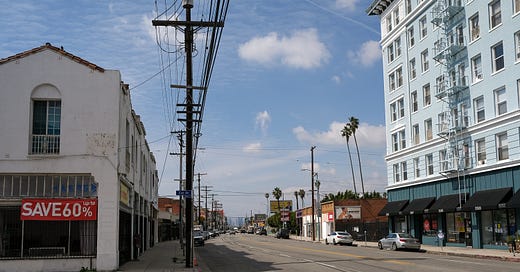

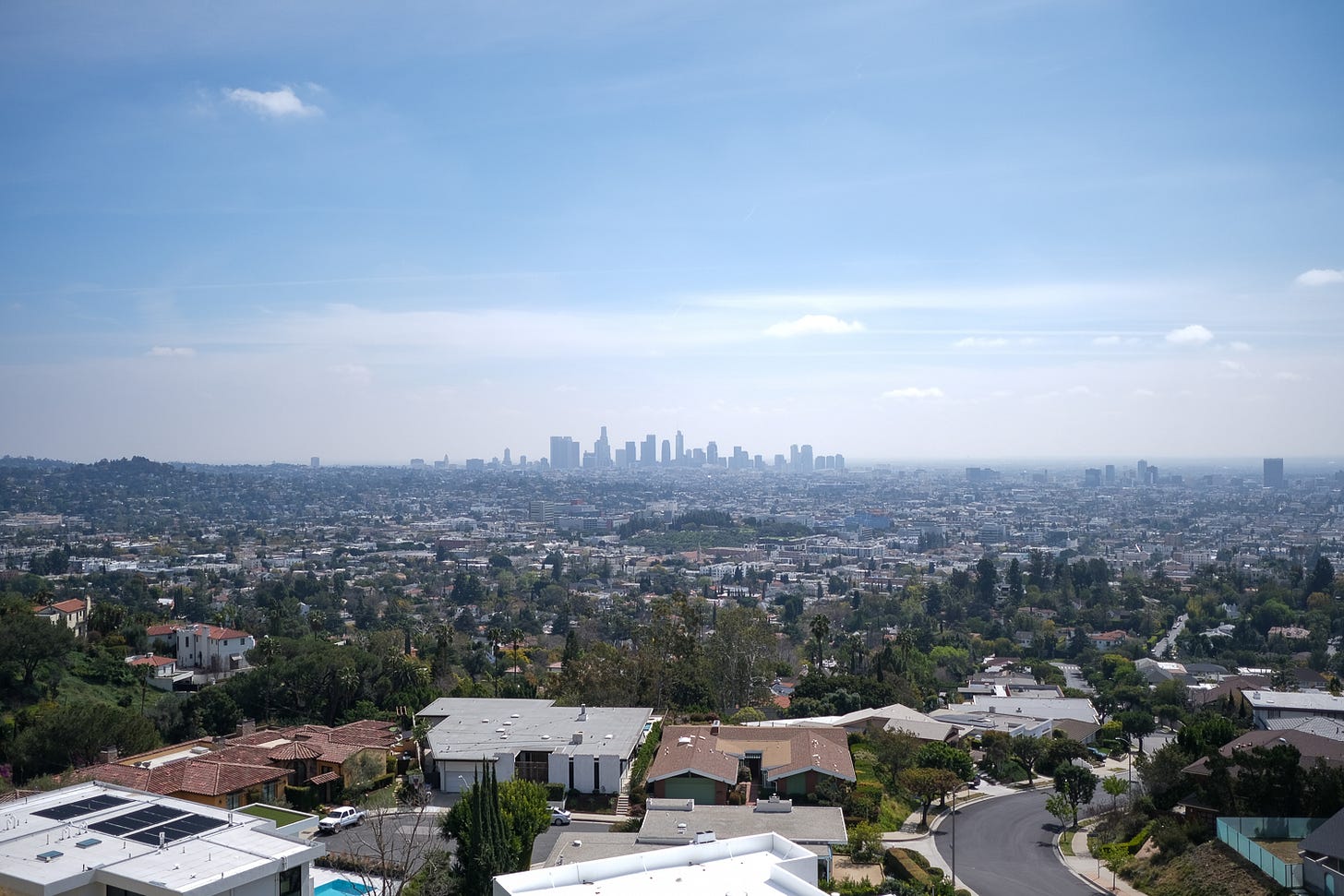
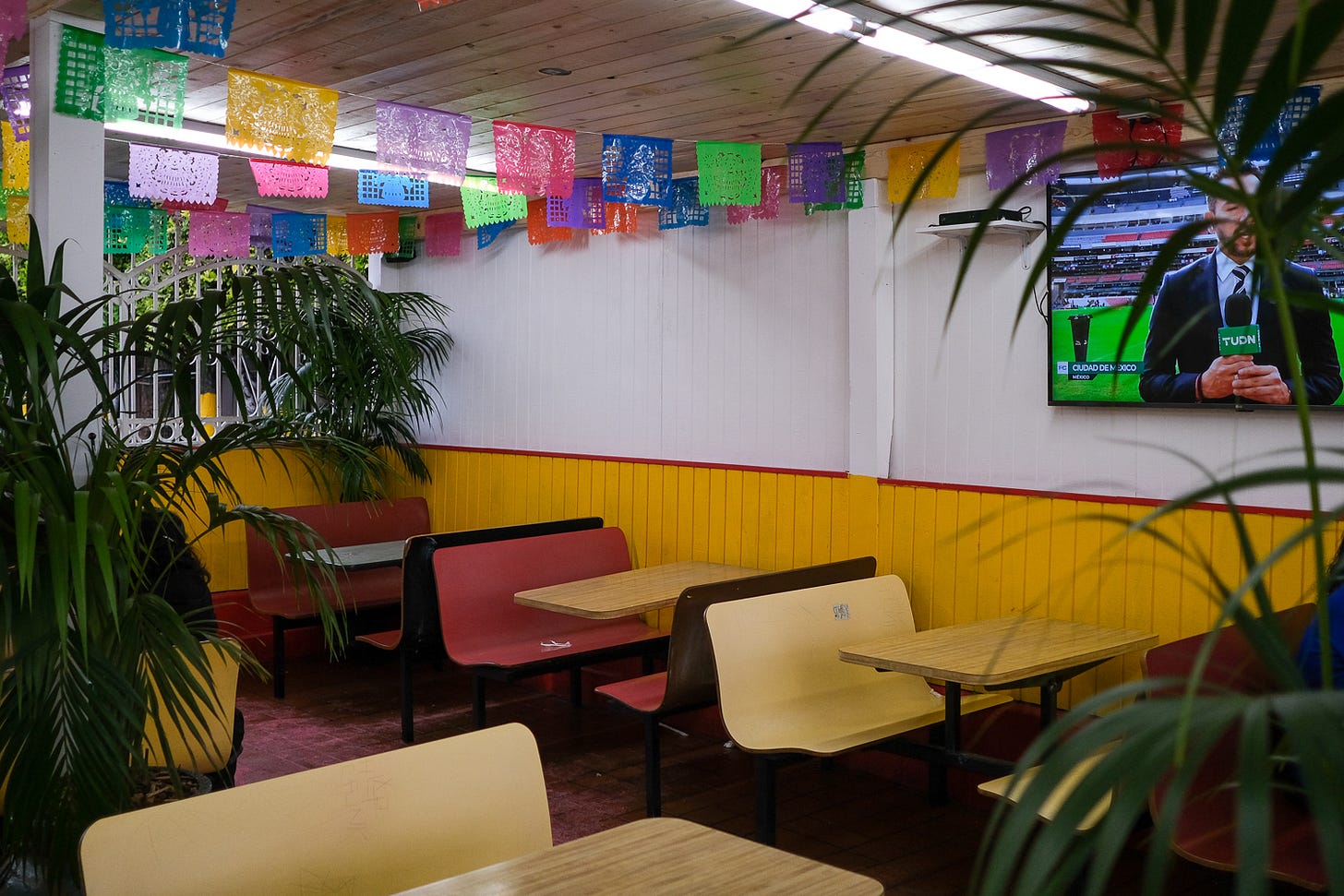
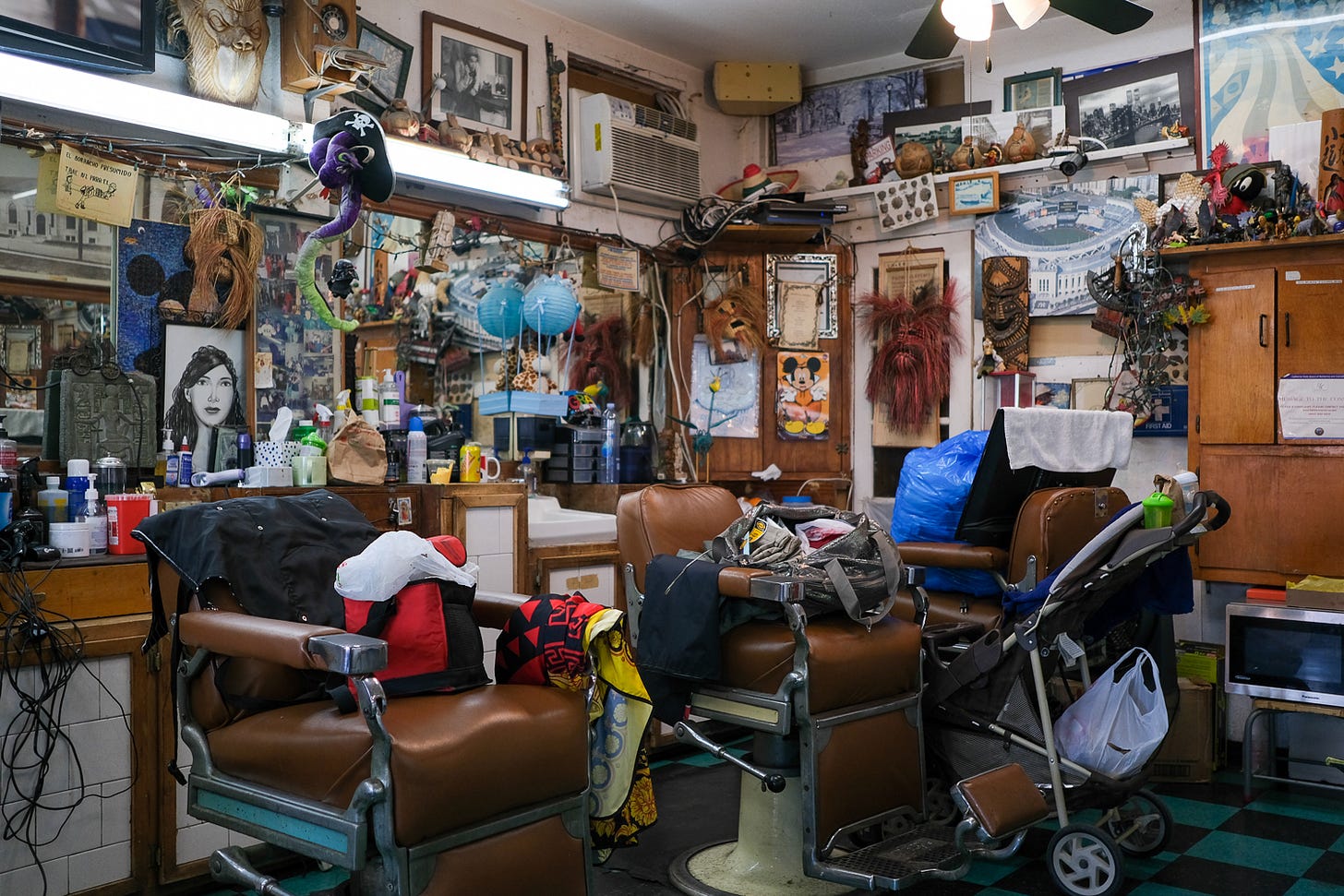
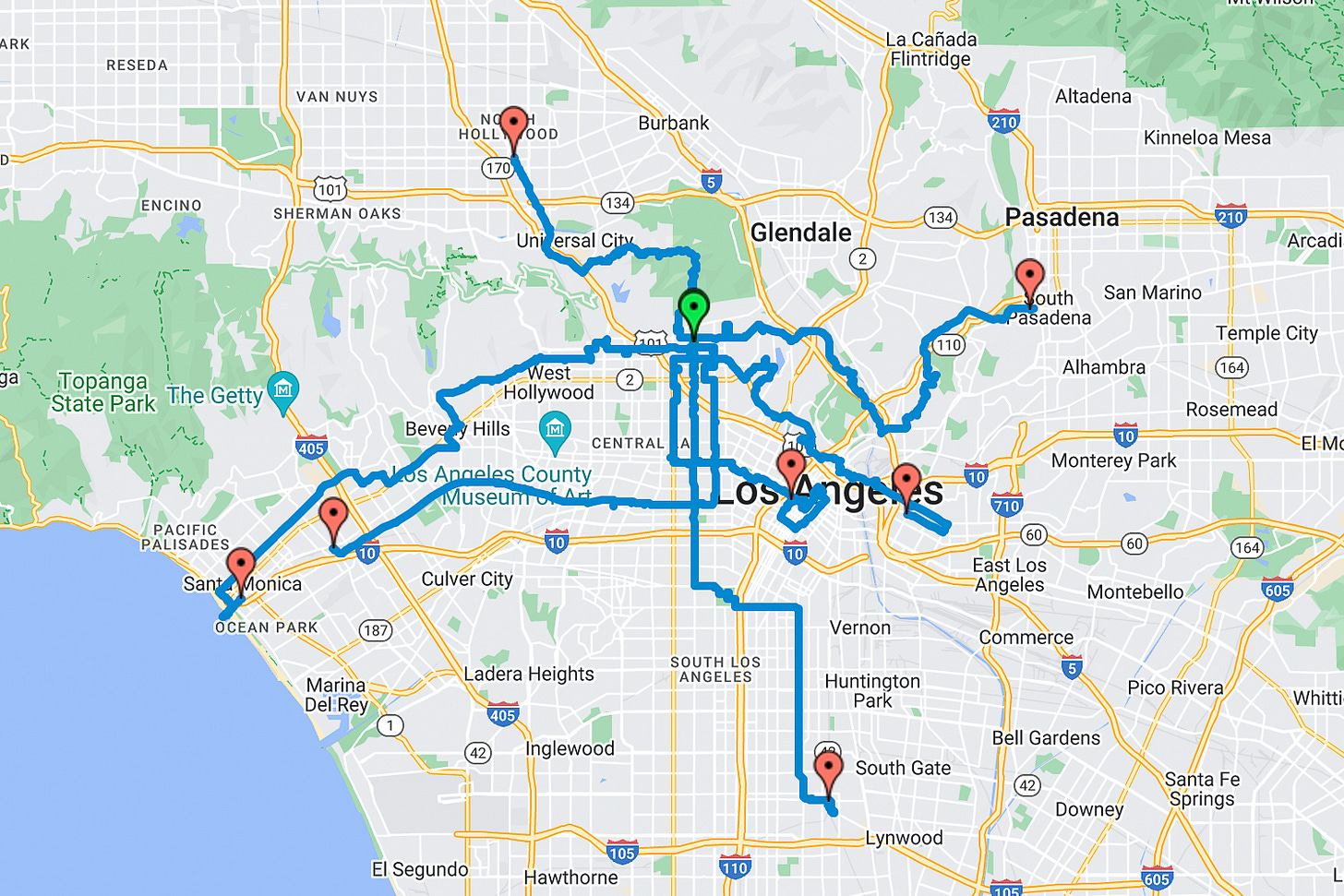

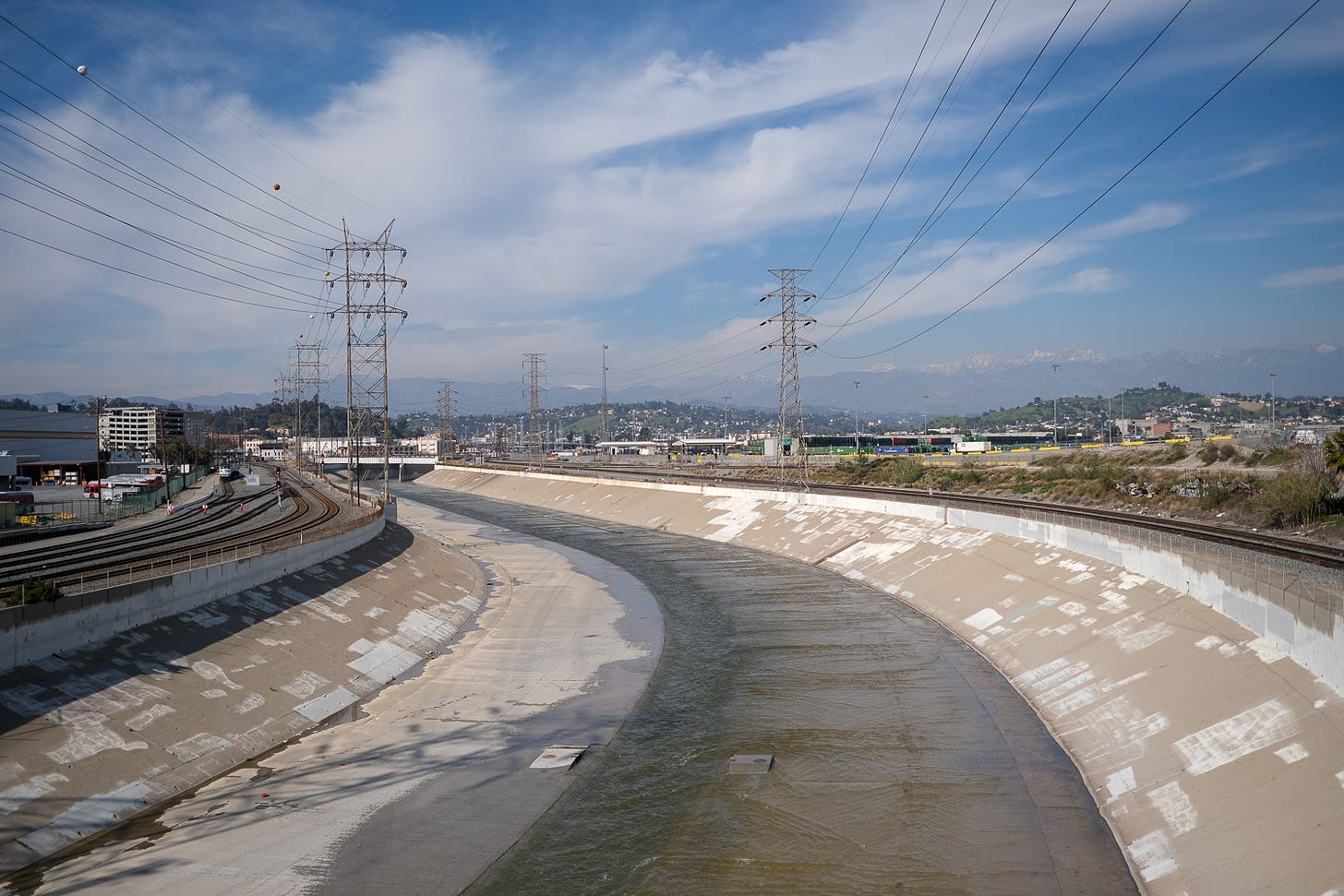
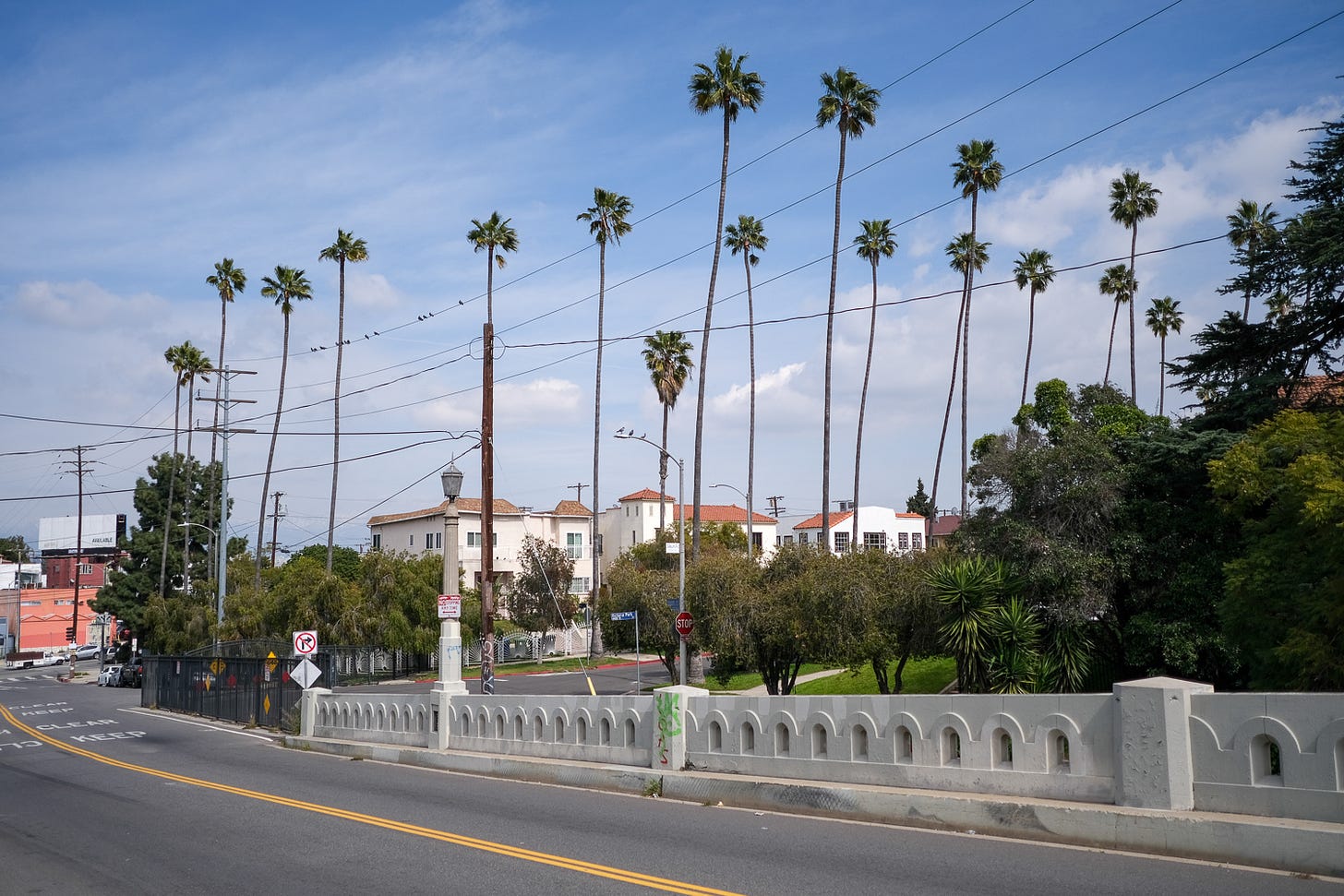
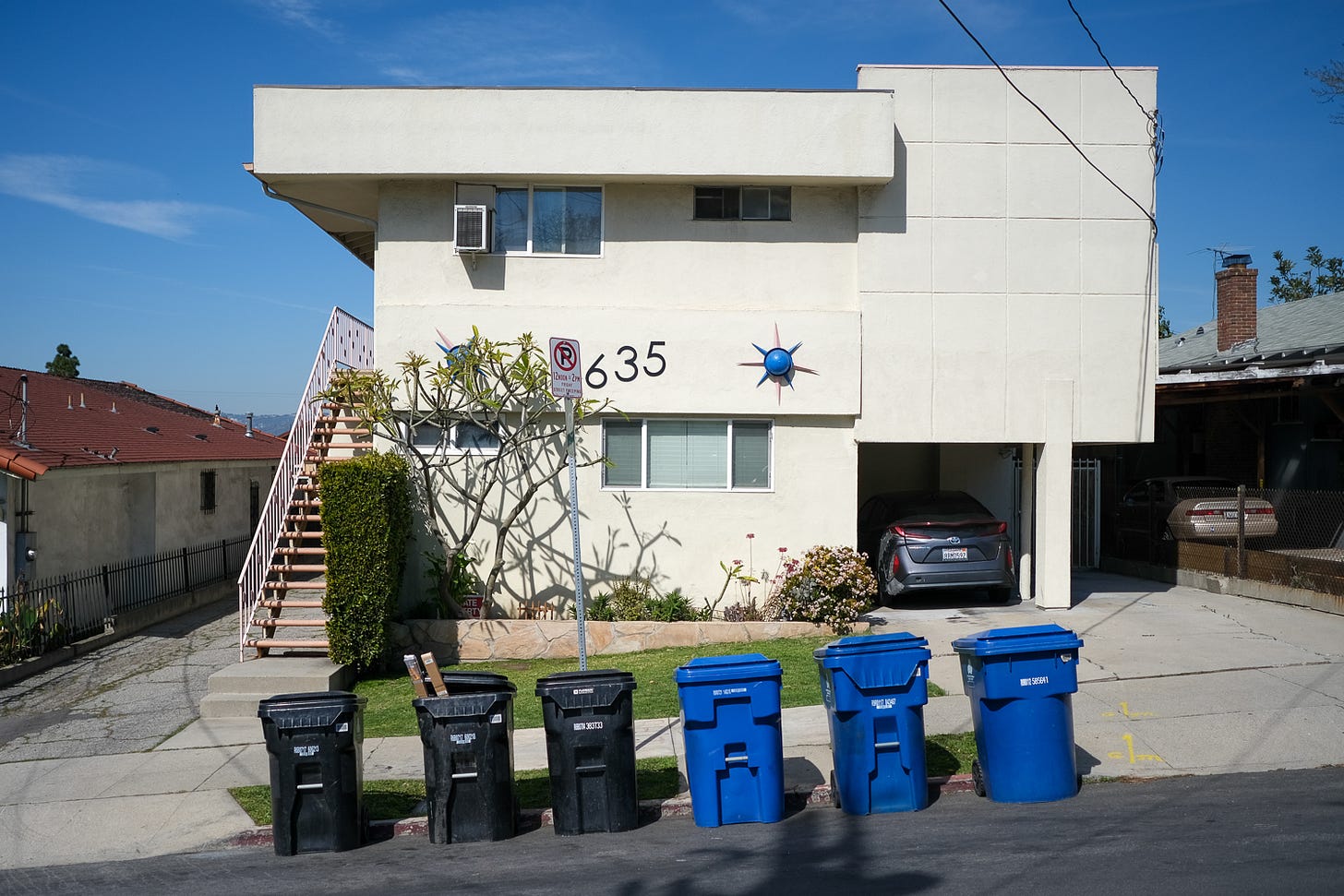

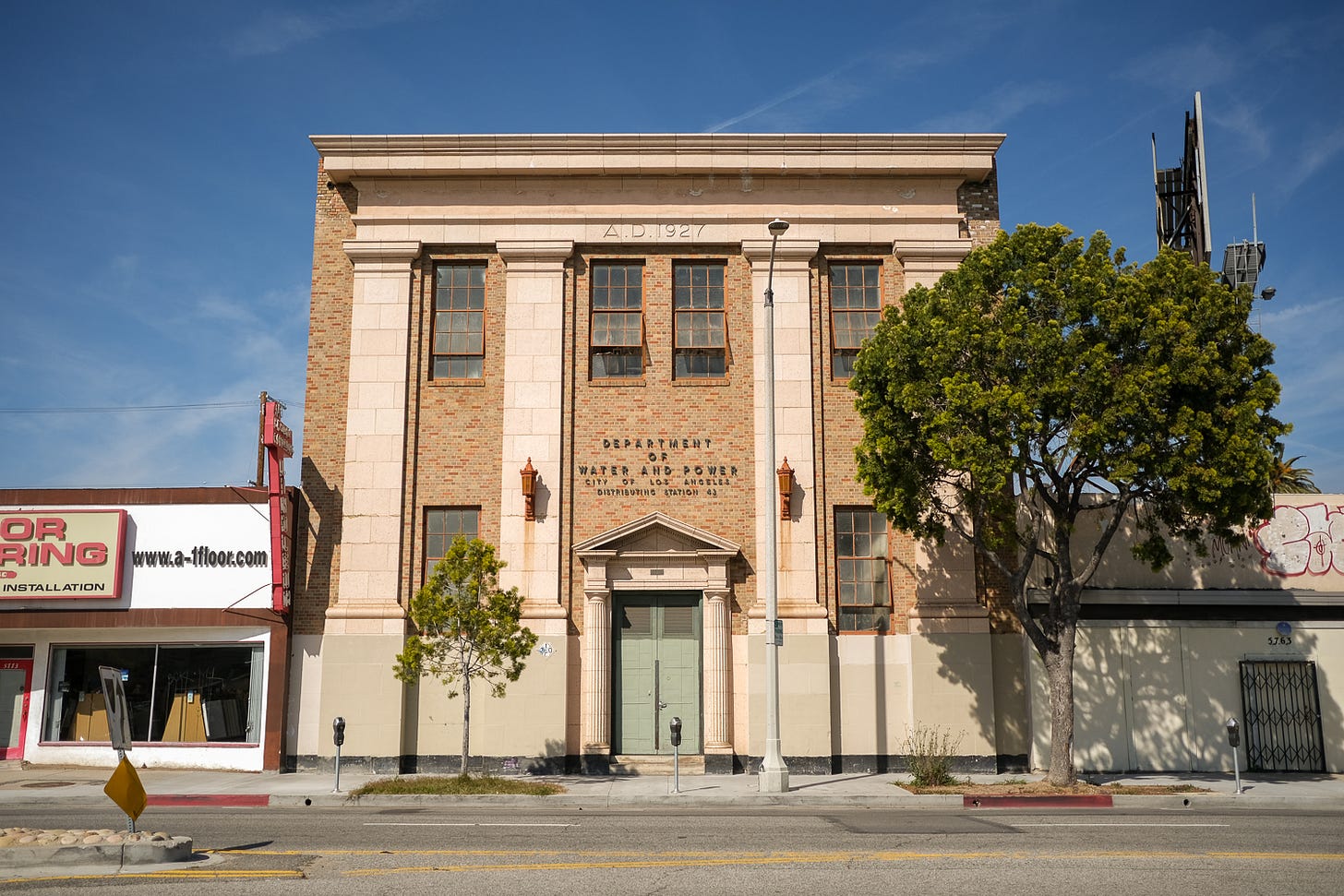
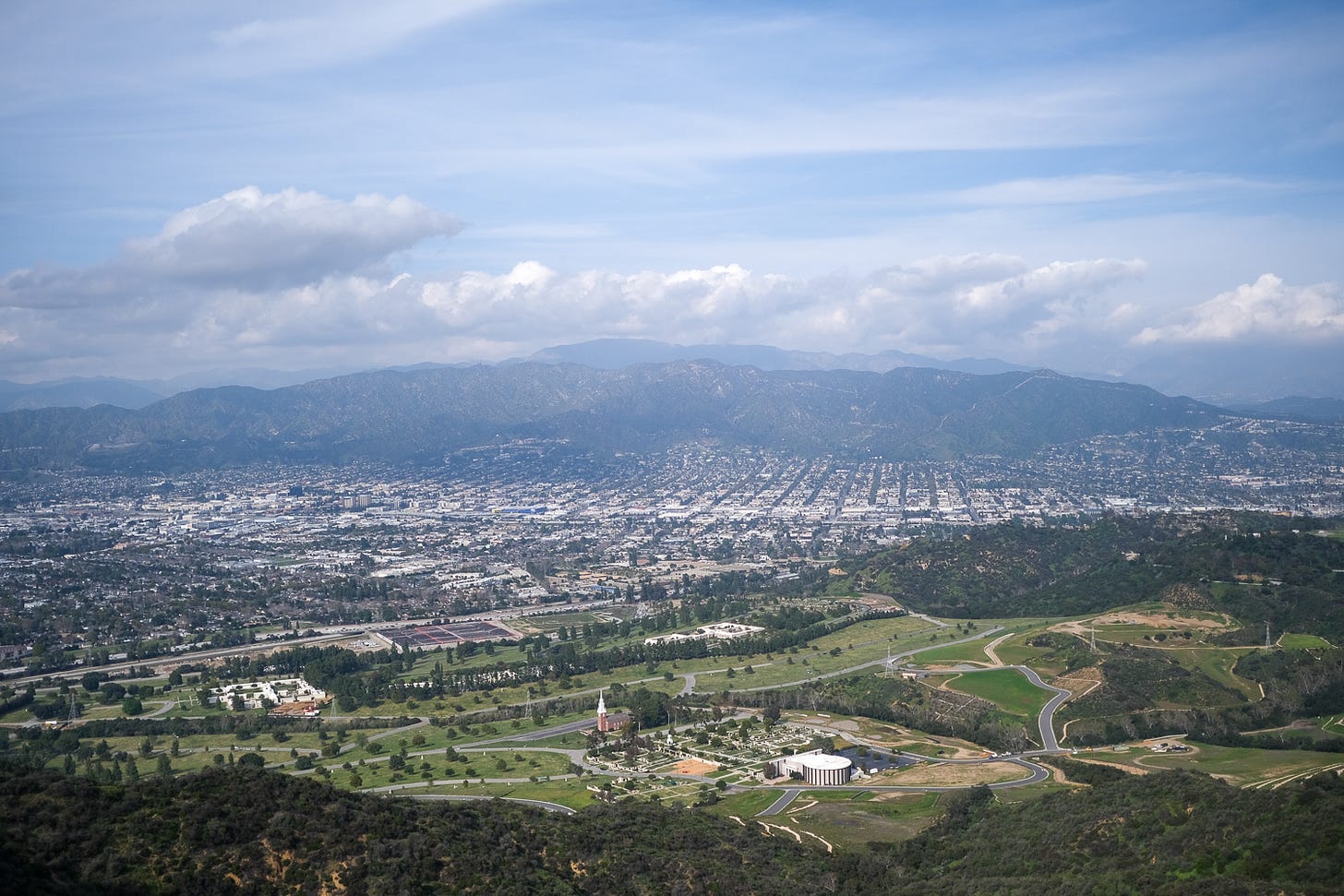
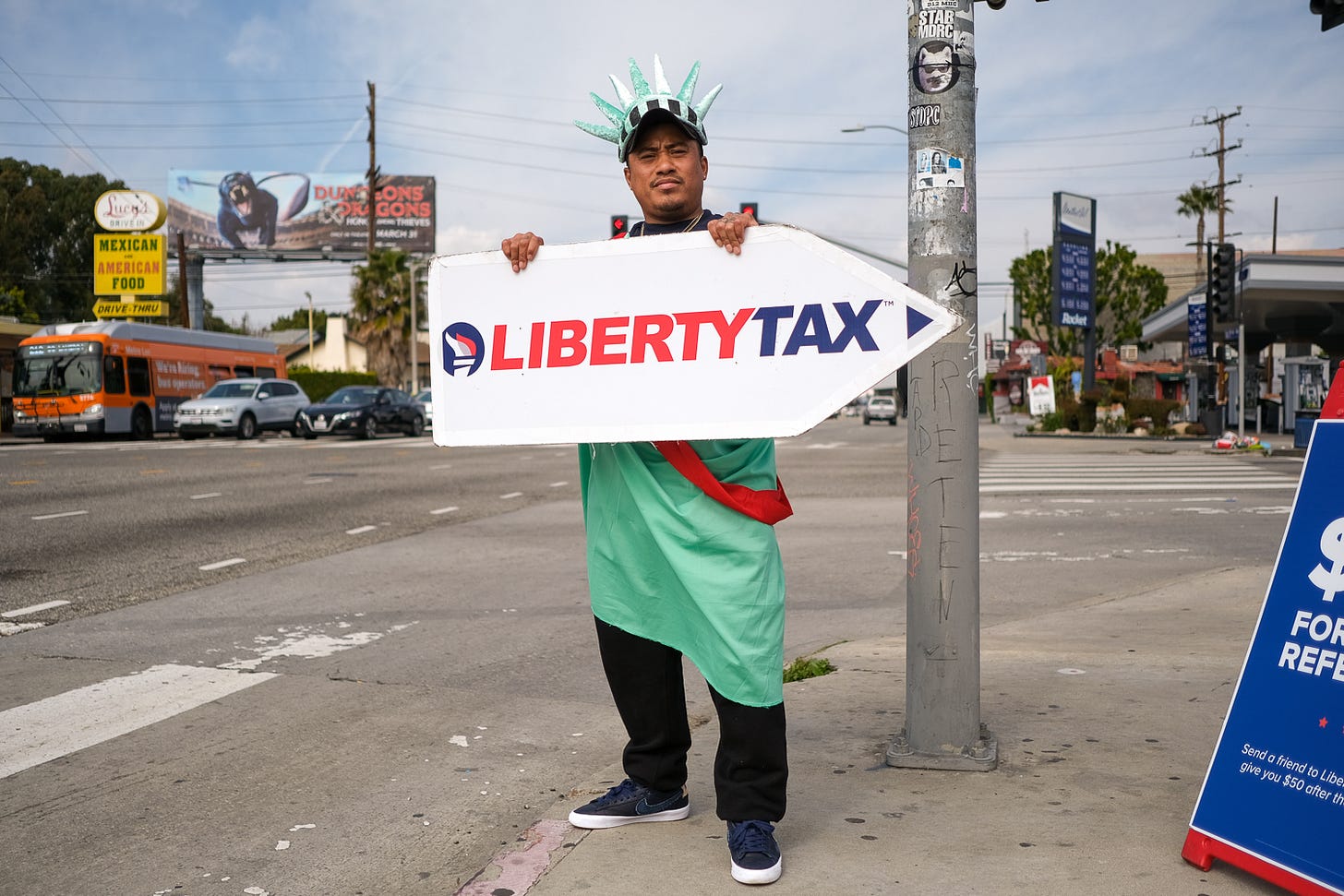
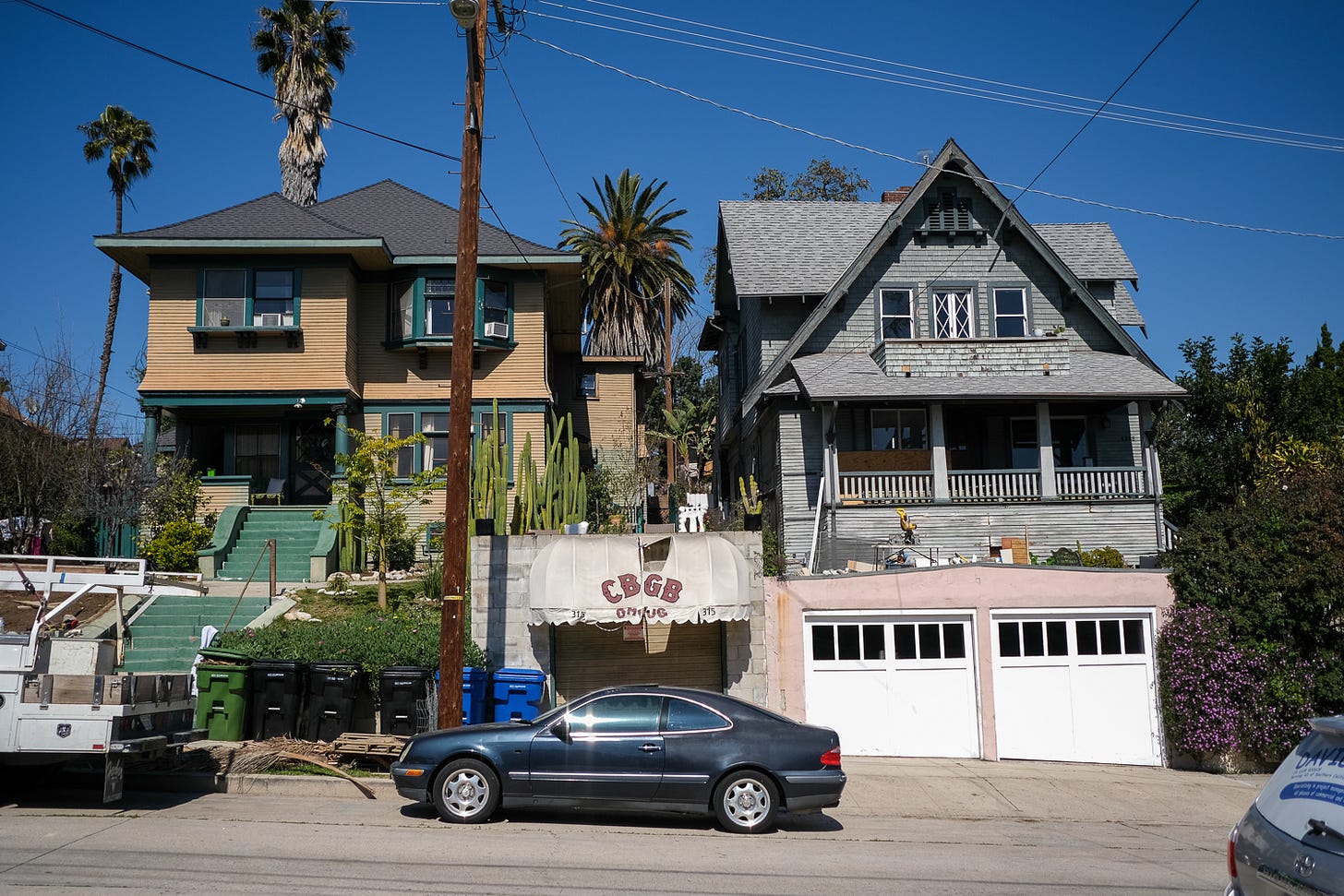
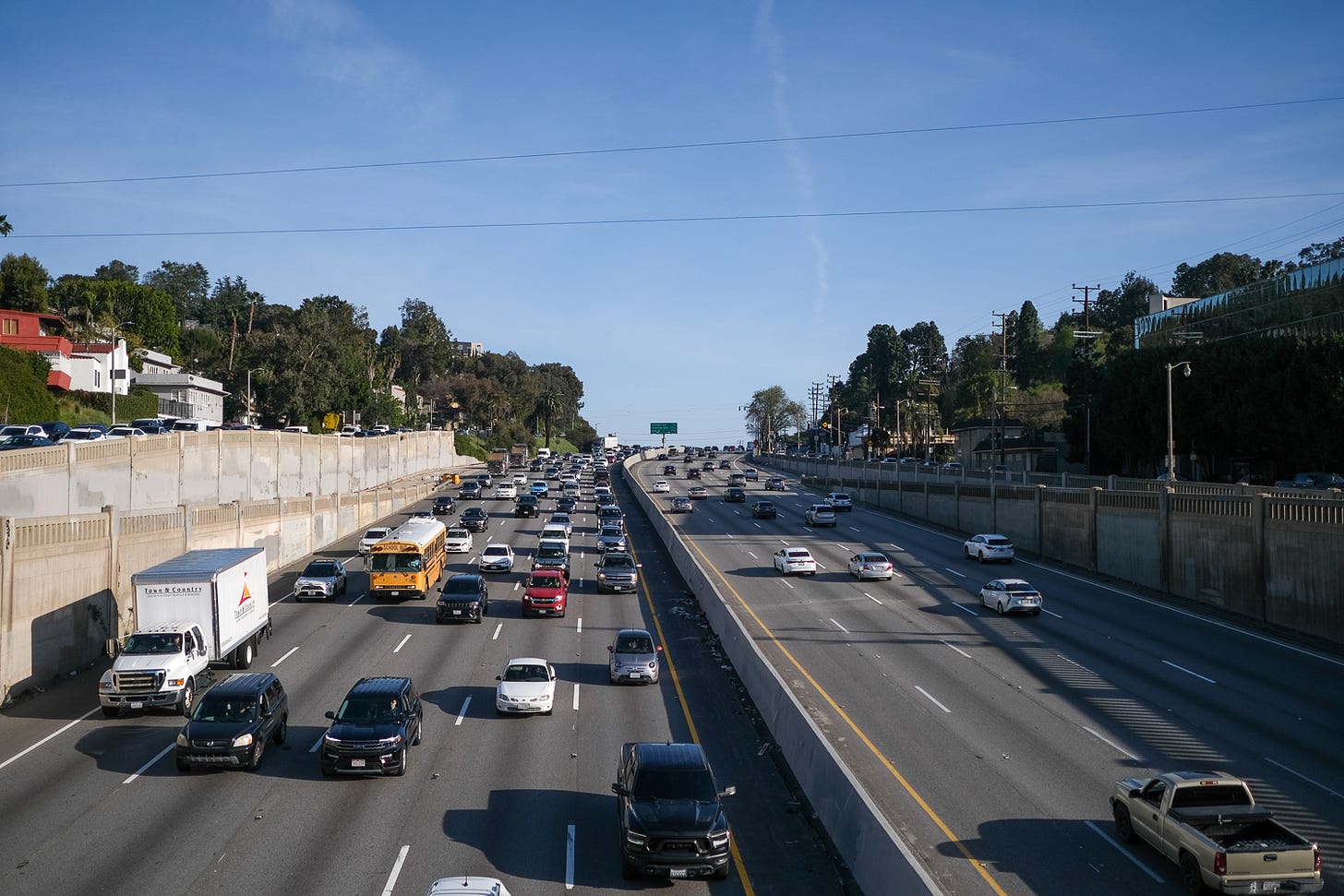
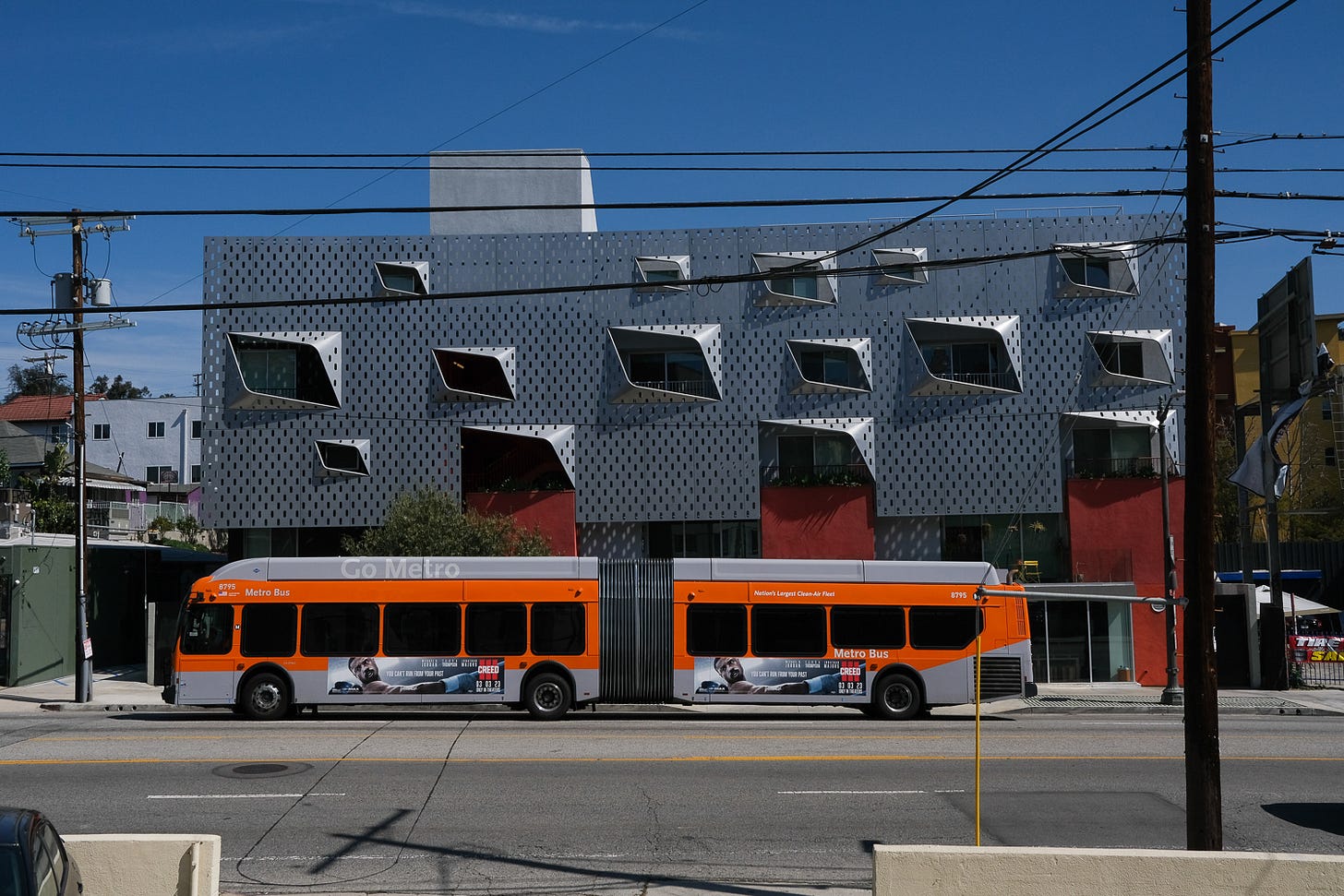
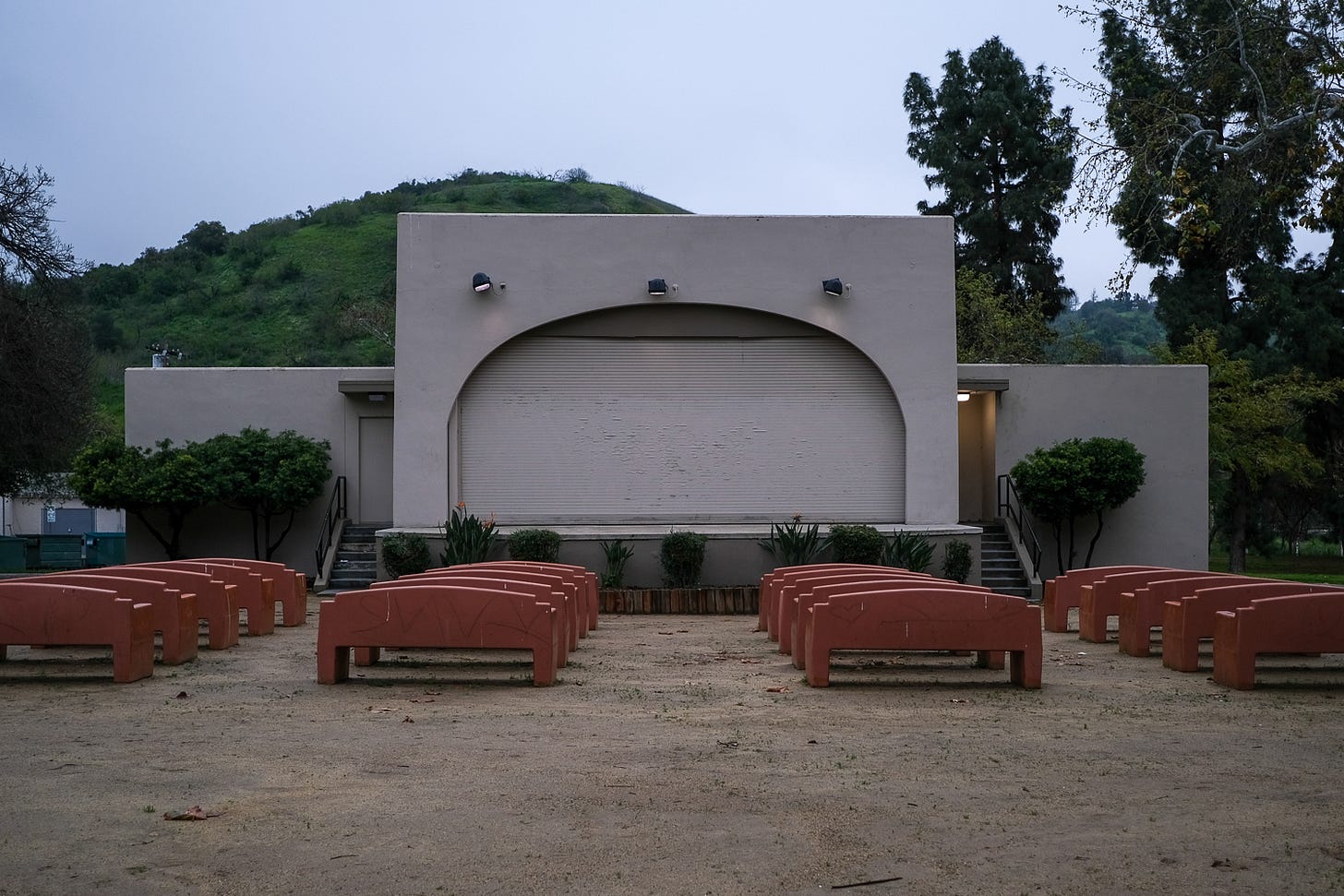
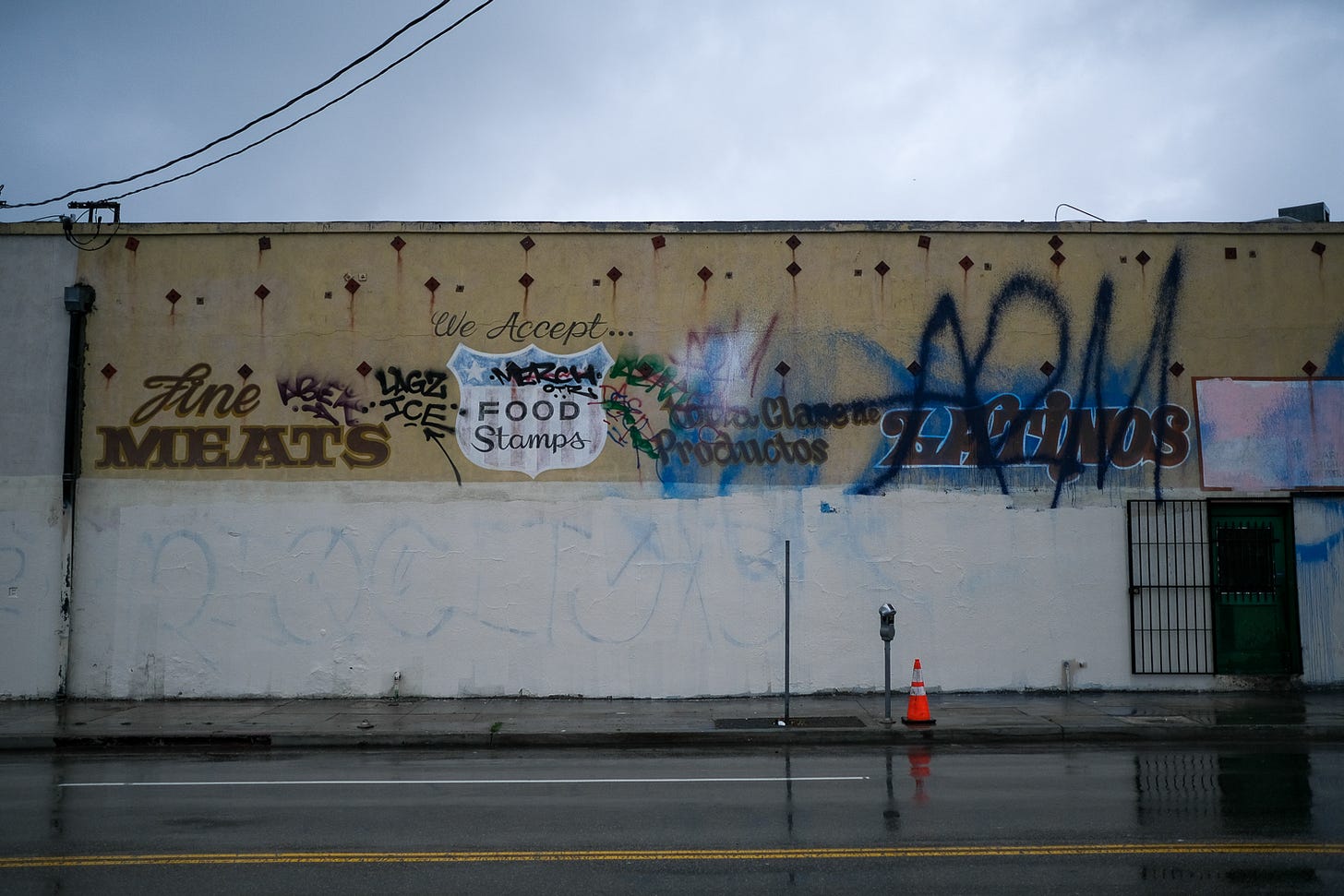
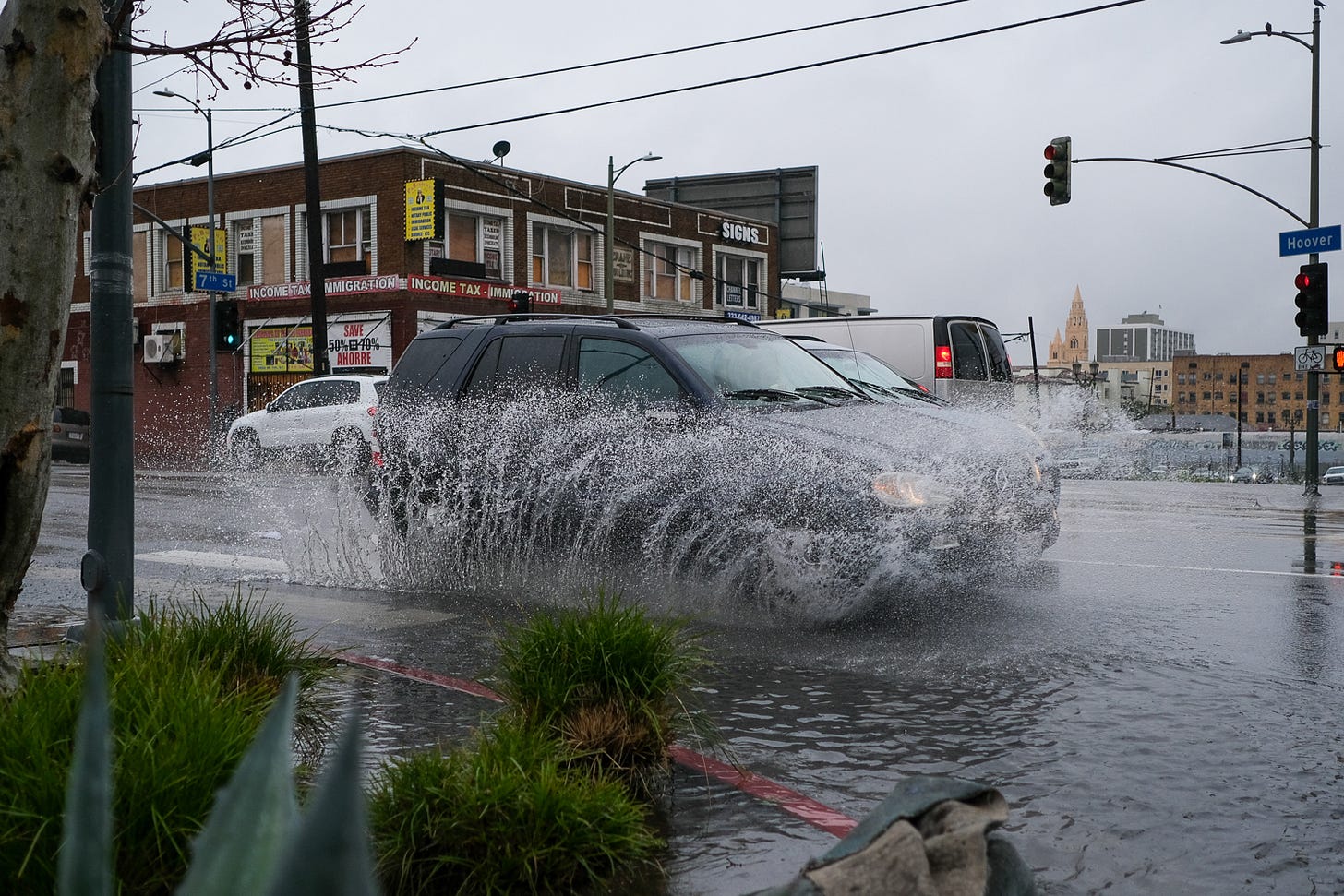
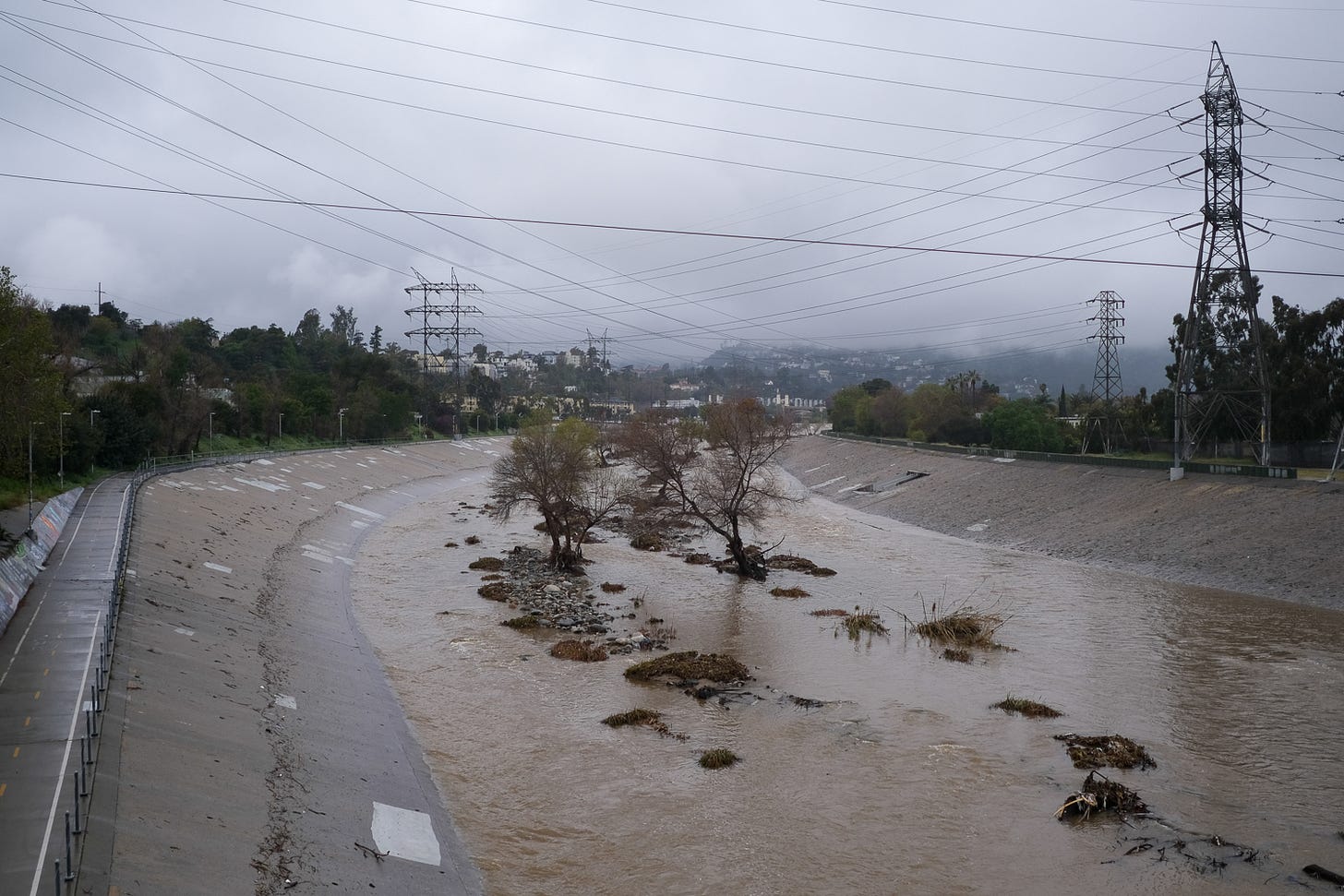
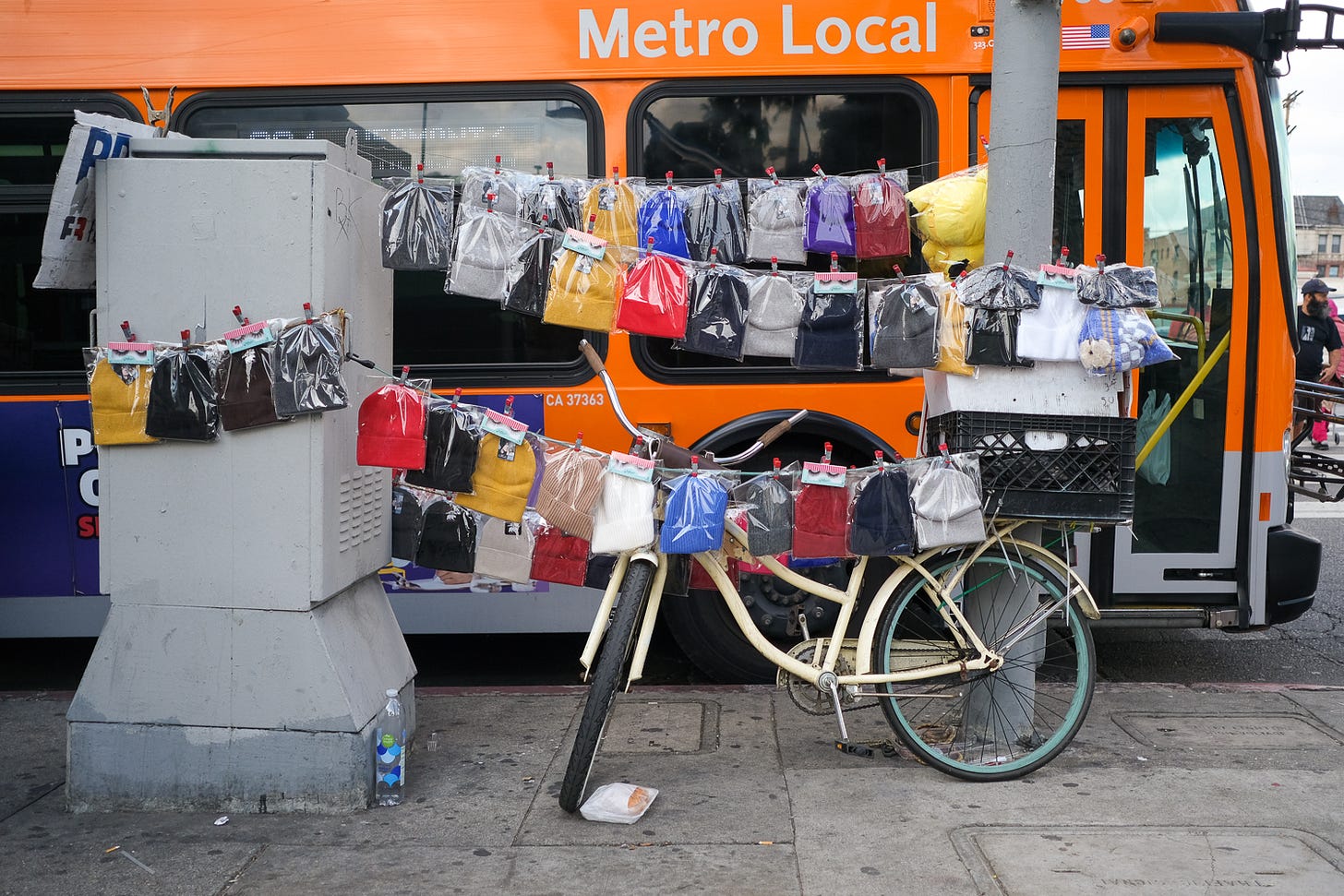
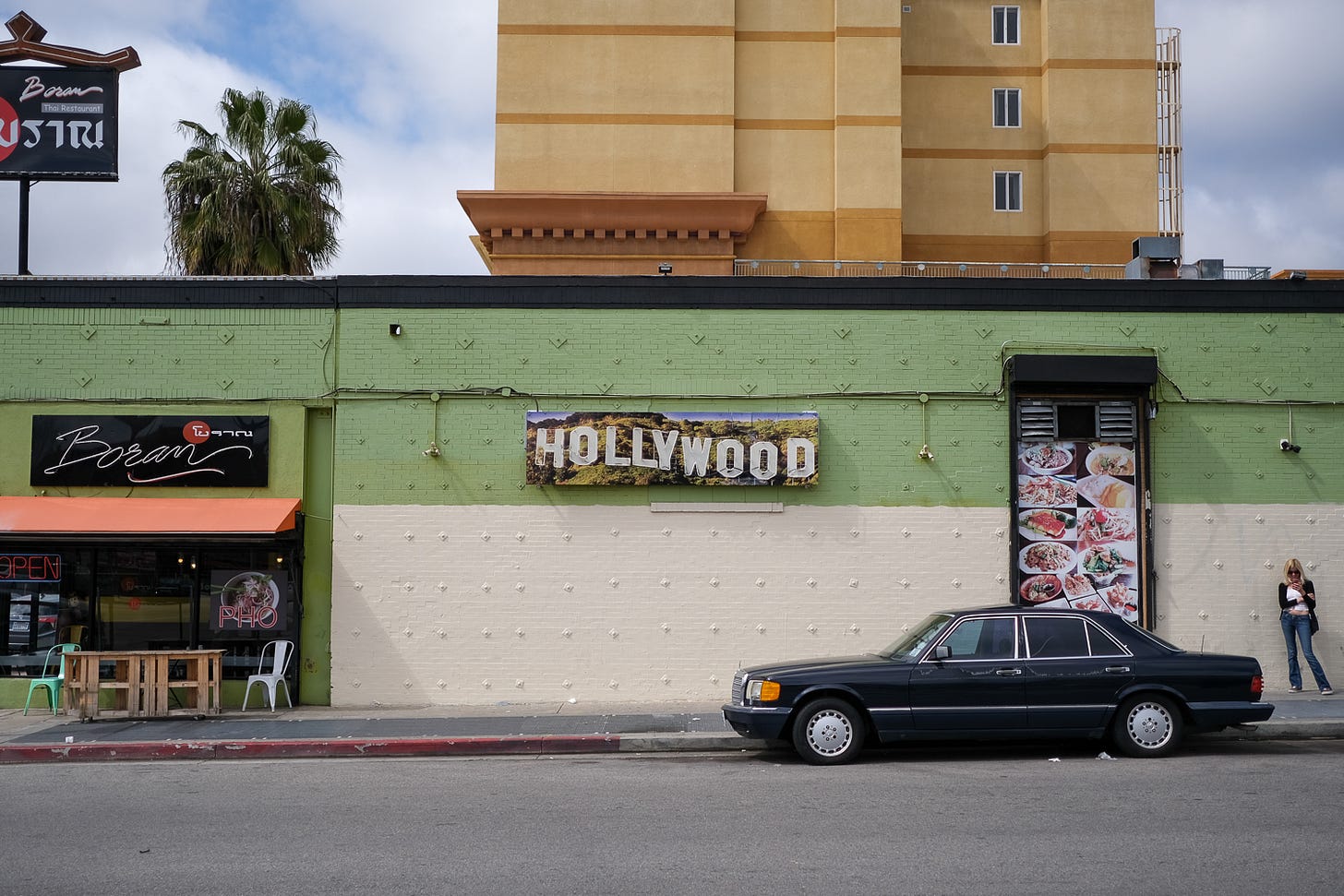
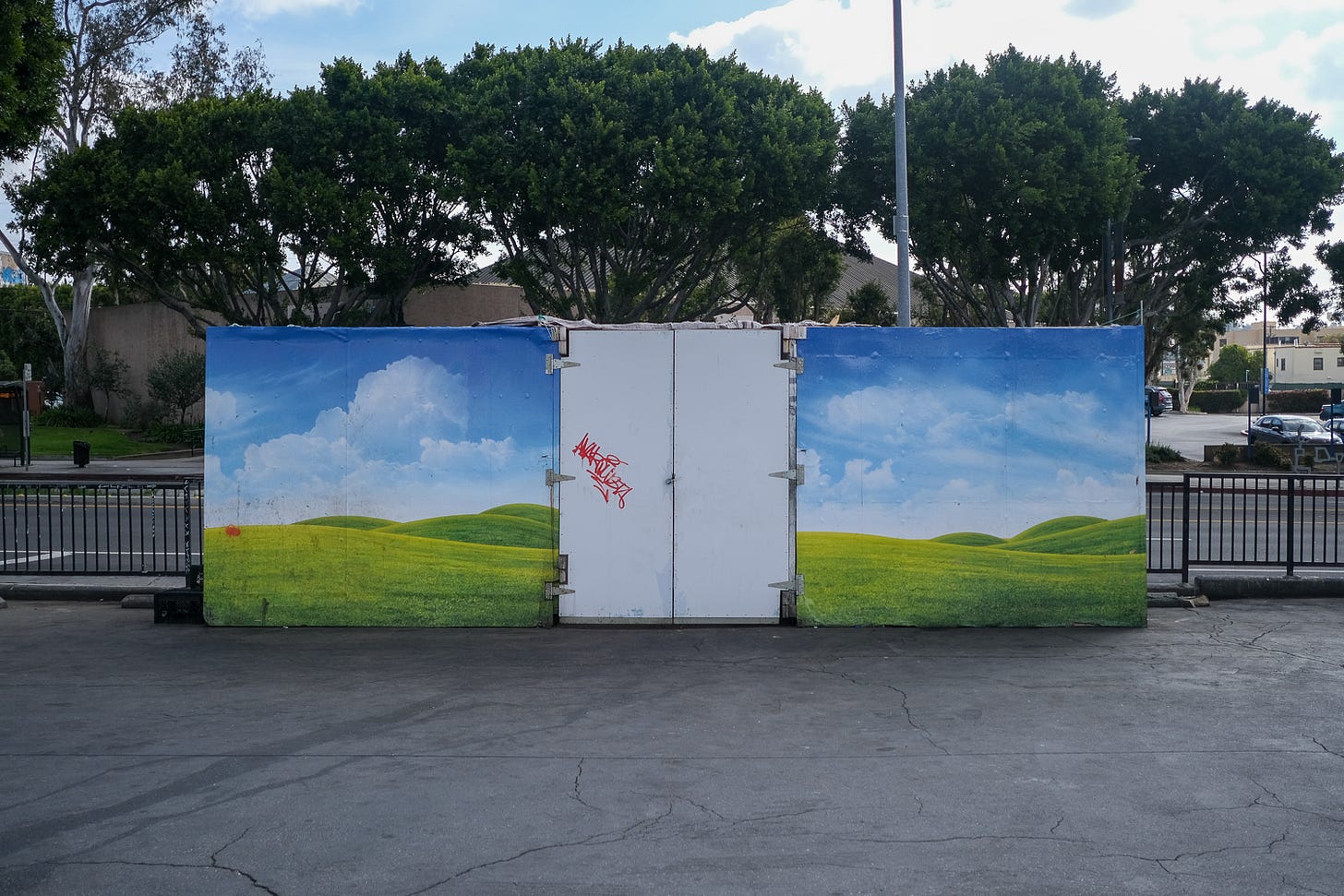
I really enjoyed Lotusland. LA is one of my favourite American cities and I think it surprises many when I say that I find the city quite gorgeous. The city has such a diversity of architectural forms and there’s lushness beaming out everywhere from manicured hedges to endless palm trees. I also think, while it’s no Boston or Montreal, it’s still more walkable than people give it credit for. It’s not really a Phoenix (or Orlando, to use your example) or other Sun Belt metros because it’s clearly older than them. Not East Coast old, but LA has a lot of pre-WWII built form, mostly from the streetcar suburbia era. It’s sort of like Detroit in that way, although LA today is more walkable in general. It’s because of this inherent older urbanism and good bones infused with the perfectly mild climate year-round that I find it frustrating how car-first Angelinos are, even as traffic only gets worse.
Thank You very much for your stories. Very Inspiring!
I have fond memories of trekking Southern California in plastic drugstore sandals. I saw a peacock up close for the first time and eventually lost one sandal in the ocean. Good times.
You reminded me of why I hold on to old plastic bus pass cards.
Appreciate your words on American homelessness.
✌🏾
Aiesha